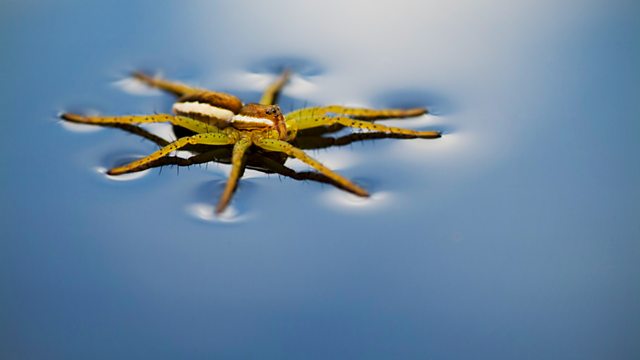Raft Spiders
Shropshire's wetlands are home to a large waterside spider. Paul Evans joins John Hughes on a wetland safari to see this beautiful arachnid.
Nestling alongside Wales and the English Midlands, Shropshire is a much unexplored county, but one with many surprises. Paul Evans is on home ground for this week's Living World as he heads off to the north of the country to meet John Hughes from Shropshire Wildlife Trust, in search of one of Shropshire's most unusual and beautiful surprises. Meeting John at Wem Moss National Nature Reserve Paul discovers that in the midst of farmland, the landscape between here and the Dee Estuary is peppered with interlocking Mires and Moors, wetland relicts of the last glacial period in Britain.
On a cool, windy spring day, Paul and John first explore a small wet woodland, a relic of a once extensive ancient habitat in this area, long cleared by man for farming. Emerging from the trees there in front of them, is an expansive open moss. Mosses in this area are glacial depressions which over time have become filled with peat deposits and are a valuable wetland for a myriad of wildlife. Fed by rainwater these are ideal habitats for the raft spider Dolomedes fimbriatus, Britain's largest native spider.
But this spring has been unusually dry, with strong dry winds from the east, so much so the wetlands are drying out. Walking over the moss, evidence is everywhere of the lack of rain in these parts for weeks. Will this wetland specialist still be able to cling on to a precarious existence in this increasingly hostile environment? Join Paul and John to find out if they indeed do find this beautiful spider after all.


